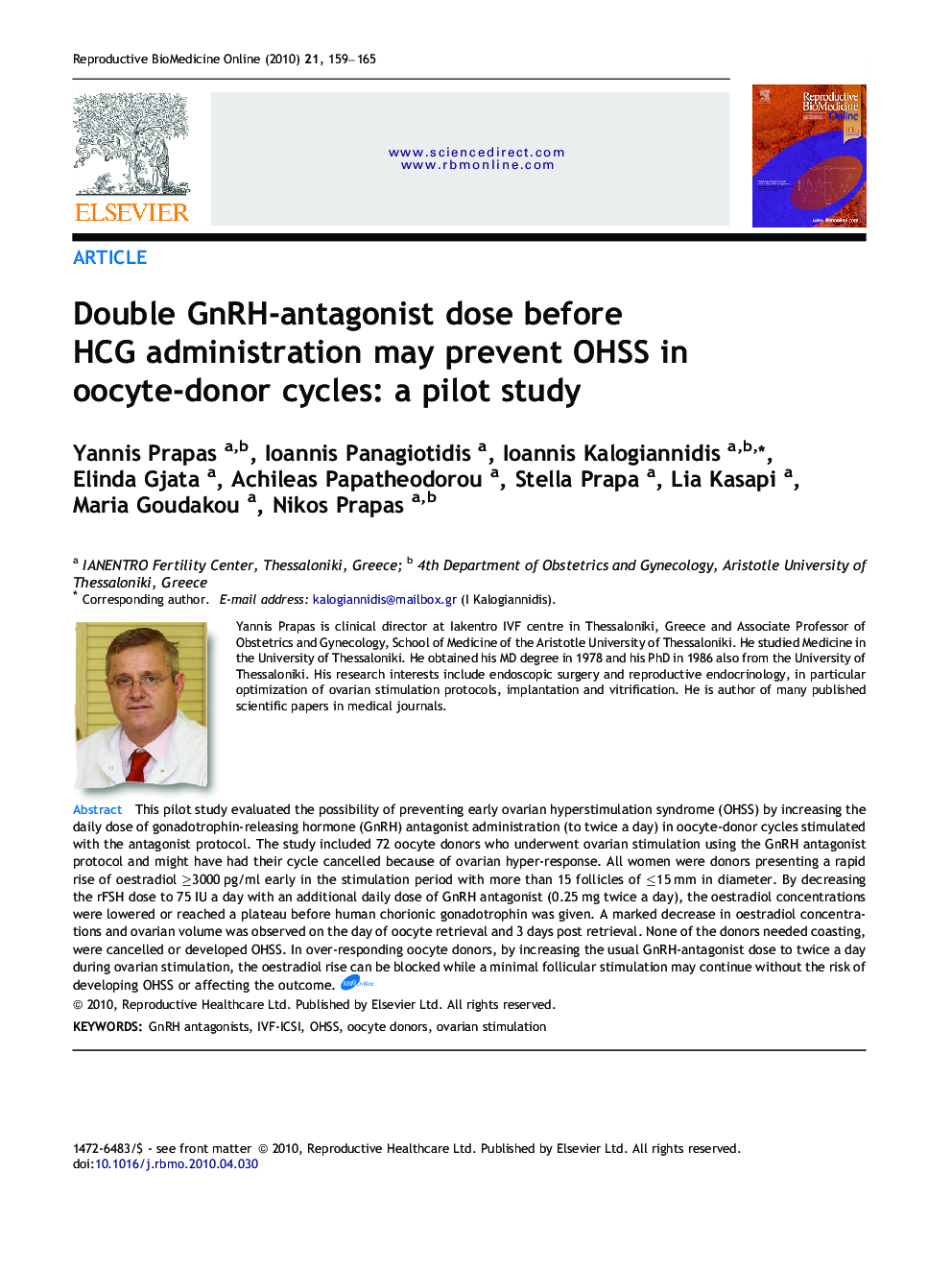| Article ID | Journal | Published Year | Pages | File Type |
|---|---|---|---|---|
| 3971746 | Reproductive BioMedicine Online | 2010 | 7 Pages |
This pilot study evaluated the possibility of preventing early ovarian hyperstimulation syndrome (OHSS) by increasing the daily dose of gonadotrophin-releasing hormone (GnRH) antagonist administration (to twice a day) in oocyte-donor cycles stimulated with the antagonist protocol. The study included 72 oocyte donors who underwent ovarian stimulation using the GnRH antagonist protocol and might have had their cycle cancelled because of ovarian hyper-response. All women were donors presenting a rapid rise of oestradiol ⩾3000 pg/ml early in the stimulation period with more than 15 follicles of ⩽15 mm in diameter. By decreasing the rFSH dose to 75 IU a day with an additional daily dose of GnRH antagonist (0.25 mg twice a day), the oestradiol concentrations were lowered or reached a plateau before human chorionic gonadotrophin was given. A marked decrease in oestradiol concentrations and ovarian volume was observed on the day of oocyte retrieval and 3 days post retrieval. None of the donors needed coasting, were cancelled or developed OHSS. In over-responding oocyte donors, by increasing the usual GnRH-antagonist dose to twice a day during ovarian stimulation, the oestradiol rise can be blocked while a minimal follicular stimulation may continue without the risk of developing OHSS or affecting the outcome.This study was conducted in order to investigate whether GnRH antagonist (Ganirelix) may prevent the early OHSS by doubling the daily dose in oocyte donor cycles stimulated with the antagonist protocol. Seventy two oocyte donors at high risk for OHSS were included in the study that might have their cycle cancelled because of ovarian hyperesponse. All cases were donors presenting significantly elevated or rapidly rising serum estradiol levels E2 ⩾ 3000 pg/ml with more than 15 follicles none of which had the appropriate diameter to be considered mature for triggering ovulation. By decreasing the rFSH dose to 75IU a day with an additional daily dose of GnRH antagonist (0.25 twice a day) the estradiol levels were lowered or reached a plateau before the hCG was given. A marked decrease of estradiol levels and ovarian volume was observed the day of oocyte retrieval and three days post retrieval. None of the donors needed coasting, were cancelled or developed OHSS.In conclusion, in oocyte donors at high risk for OHSS, by increasing to twice a day the usual GnRH-antagonist dose one or two days before hCG administration, the estradiol rise could be blocked while a minimal follicular stimulation may continue without the risk of developing OHSS or affecting the outcome.
